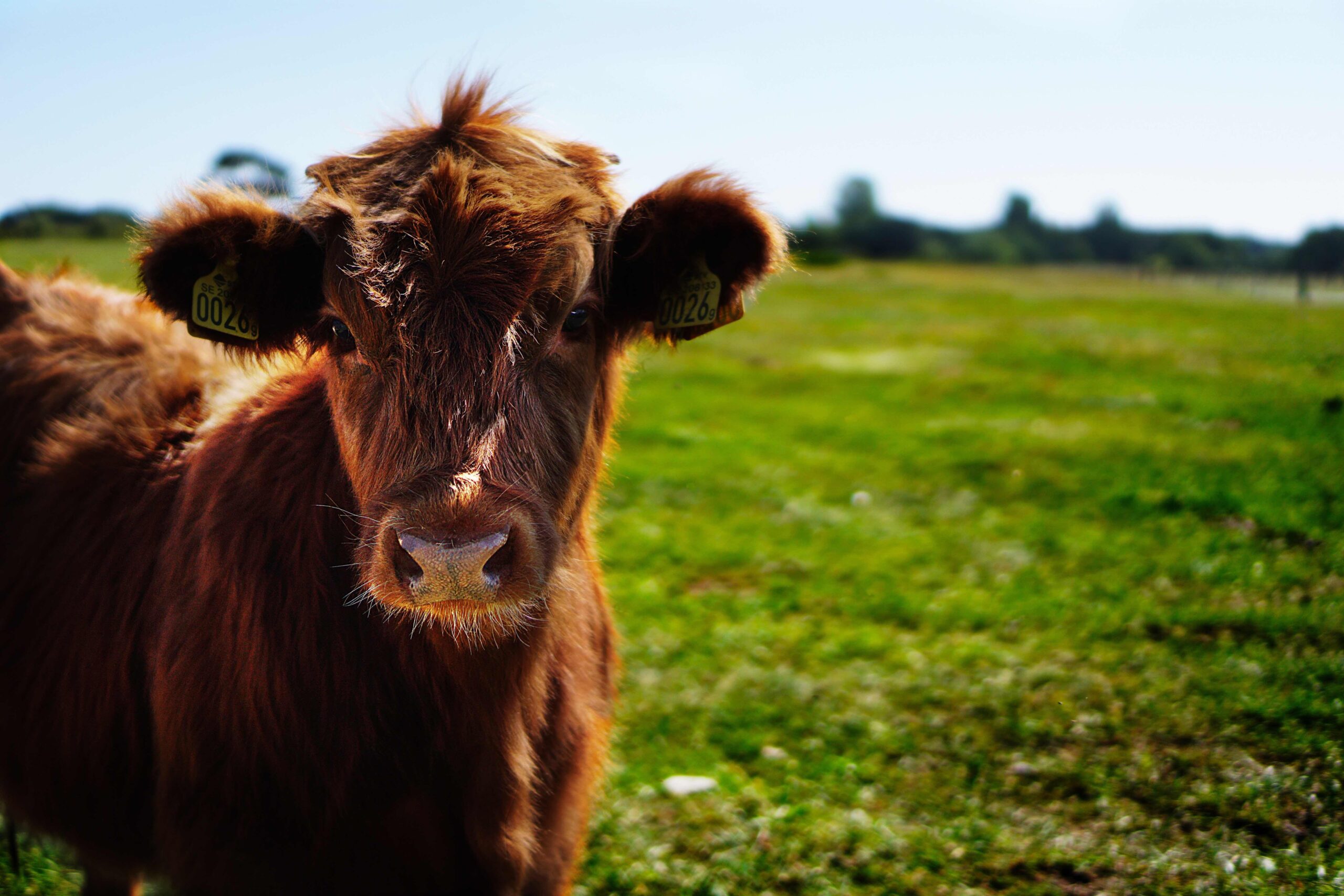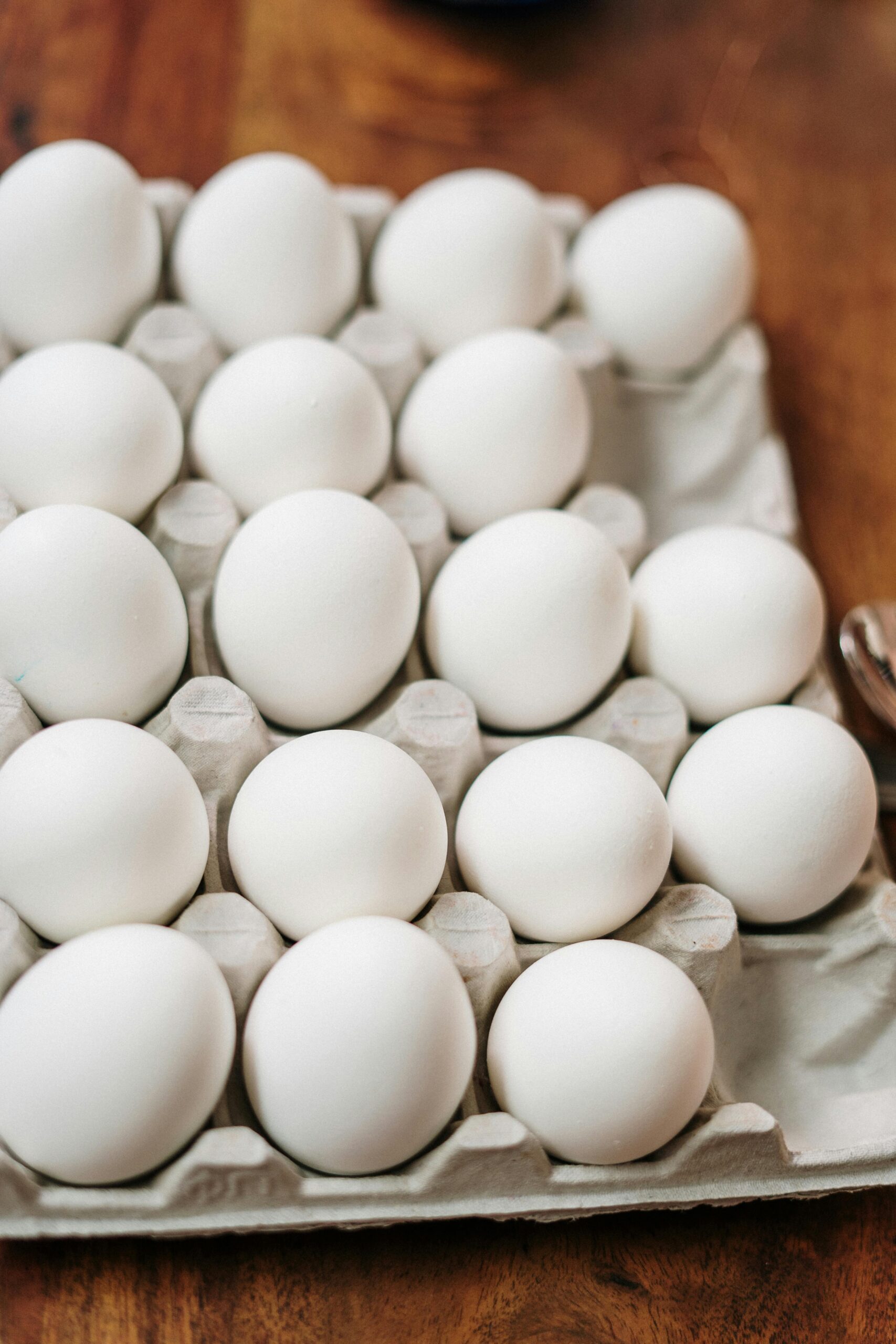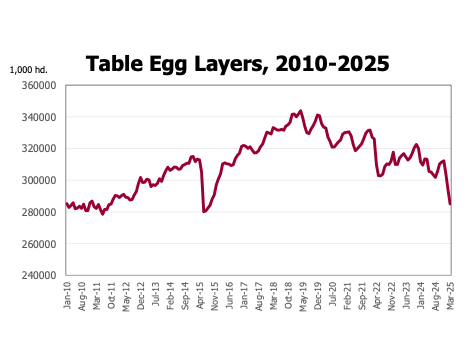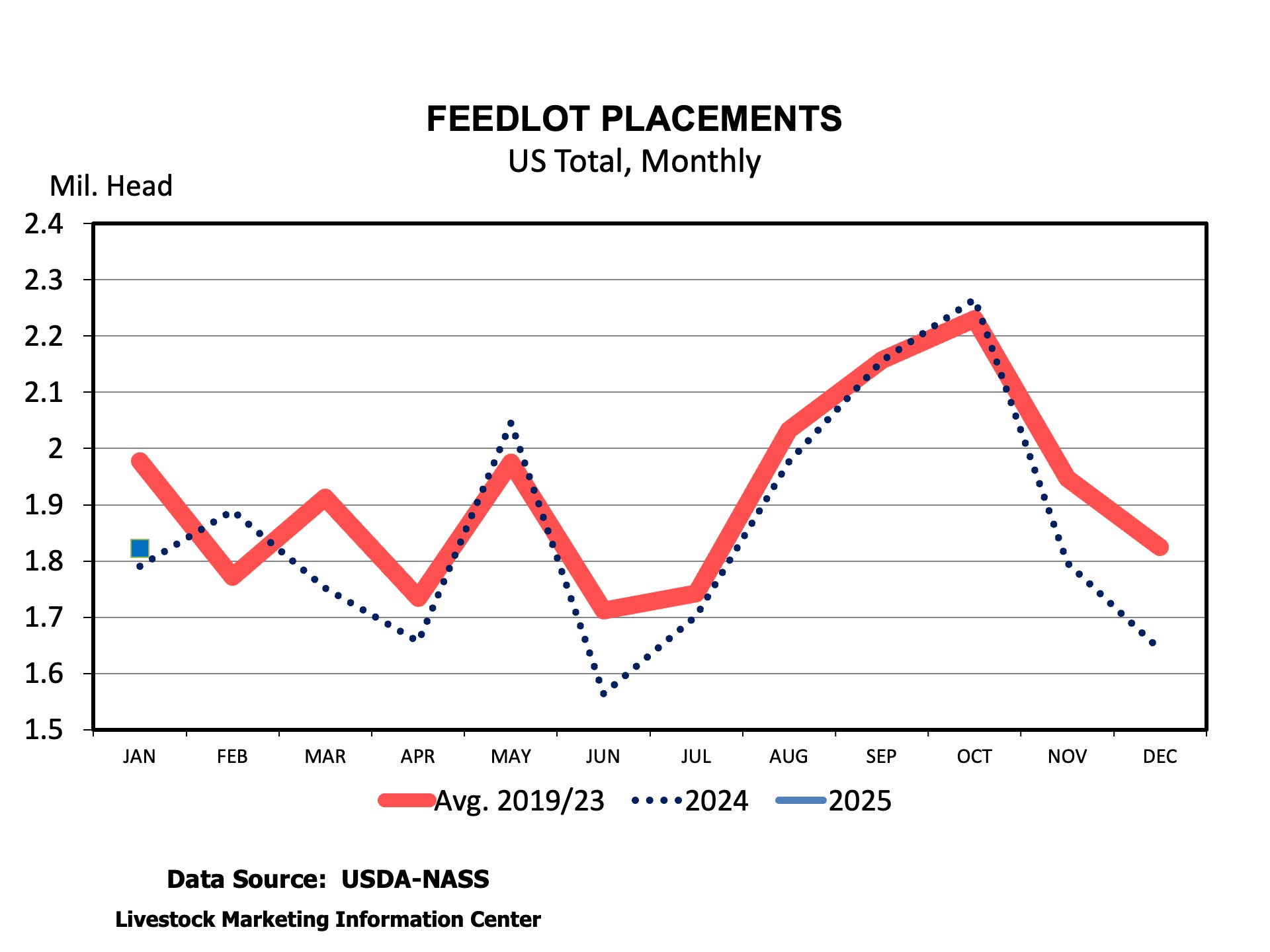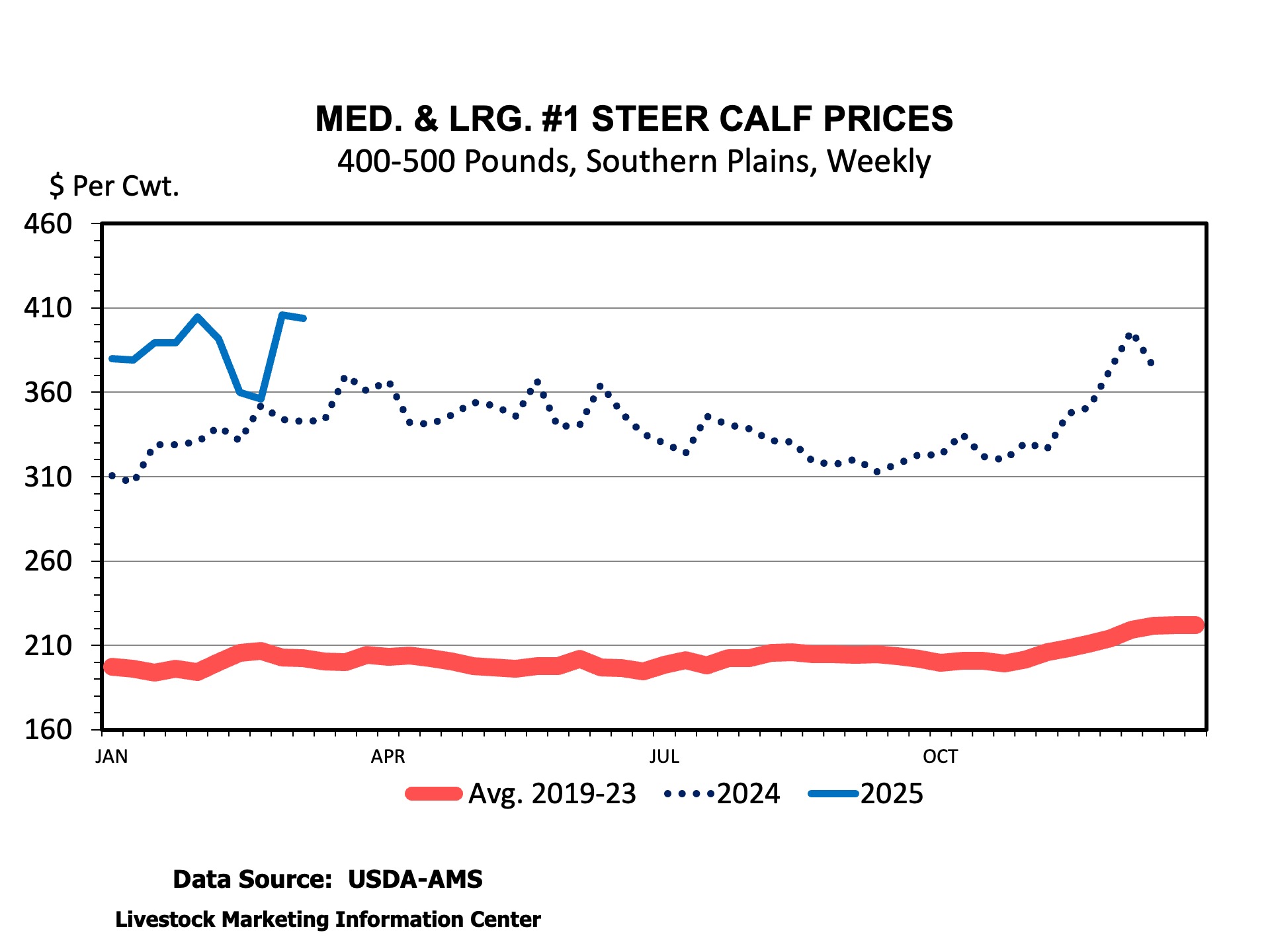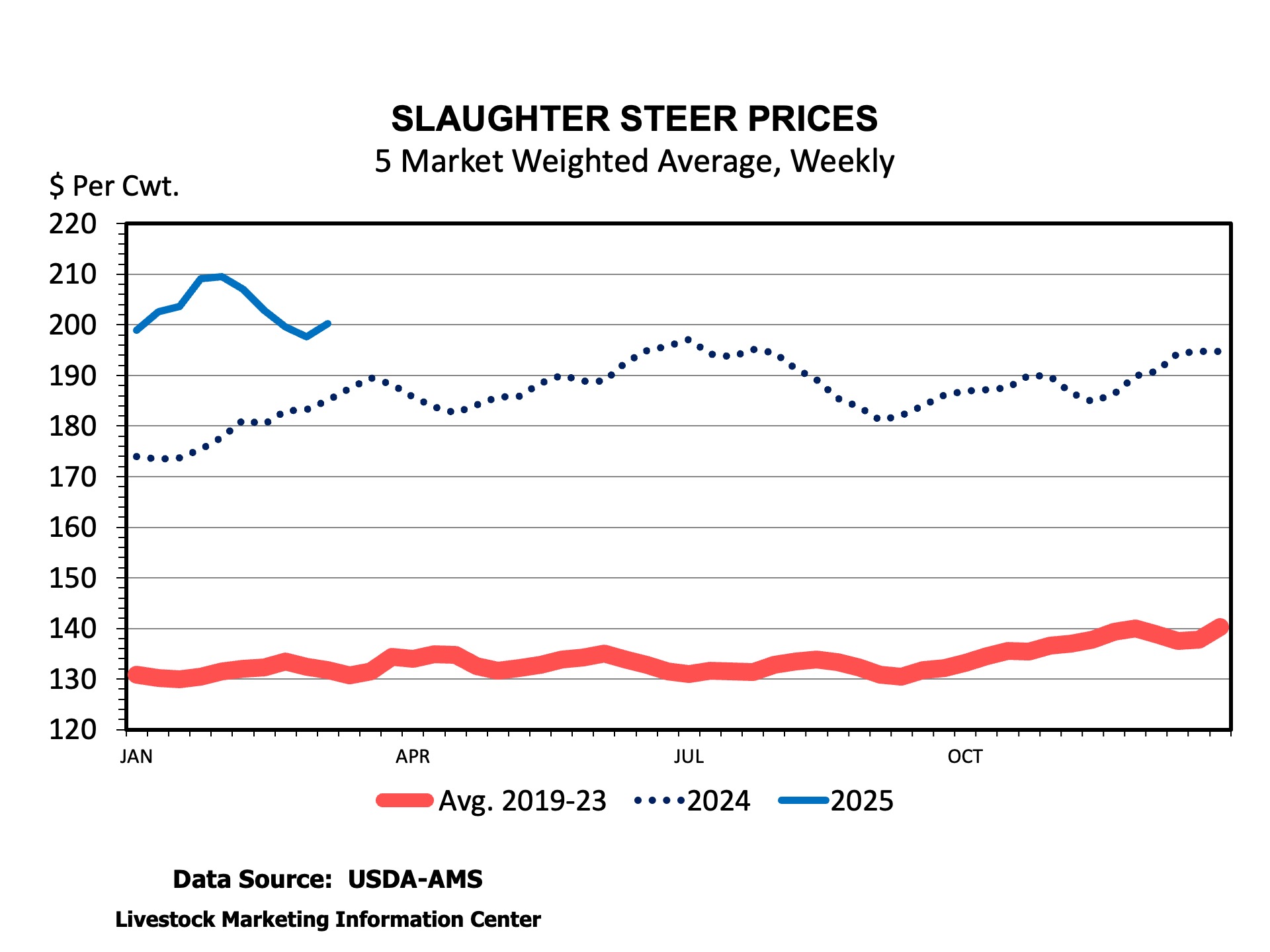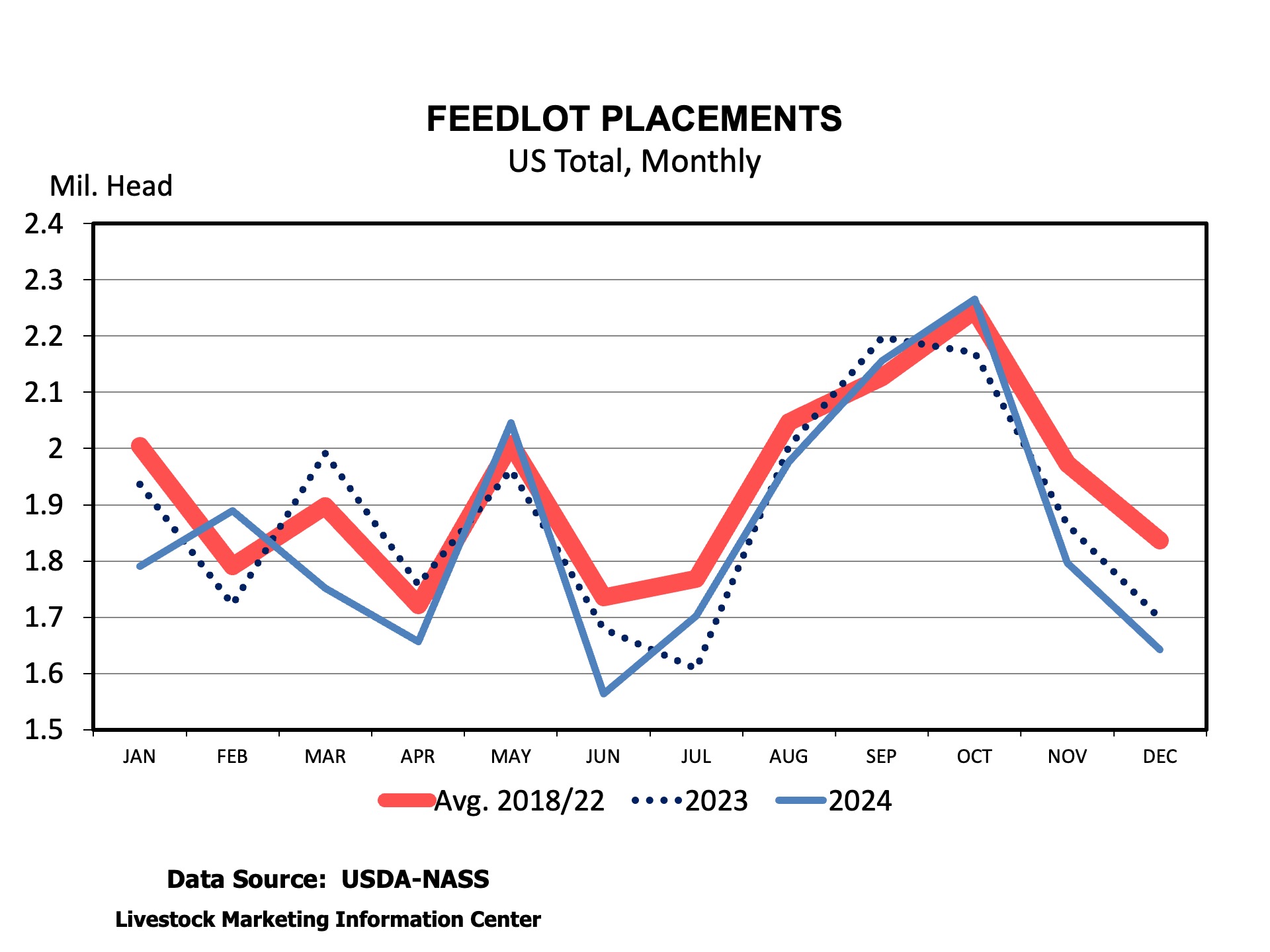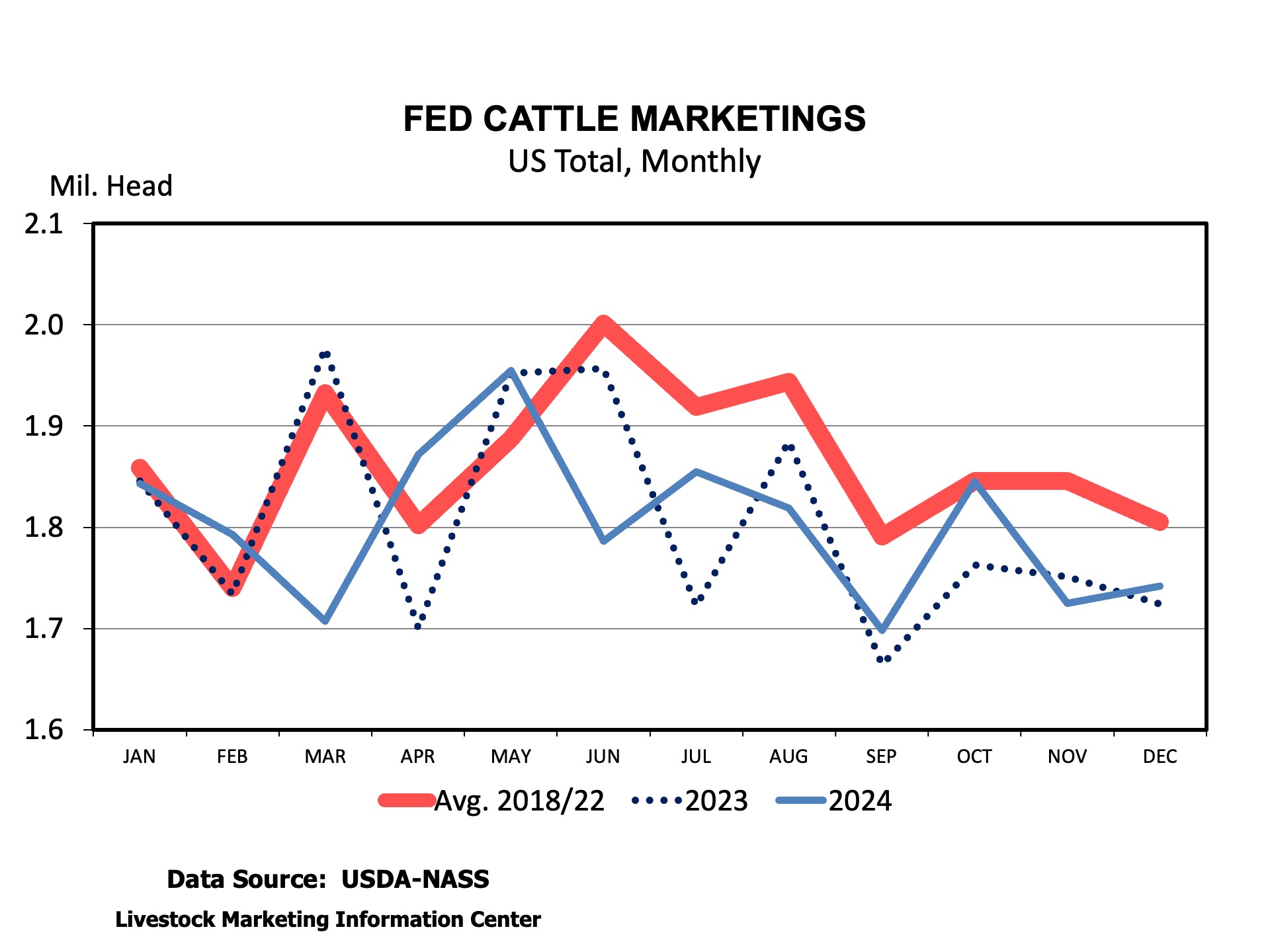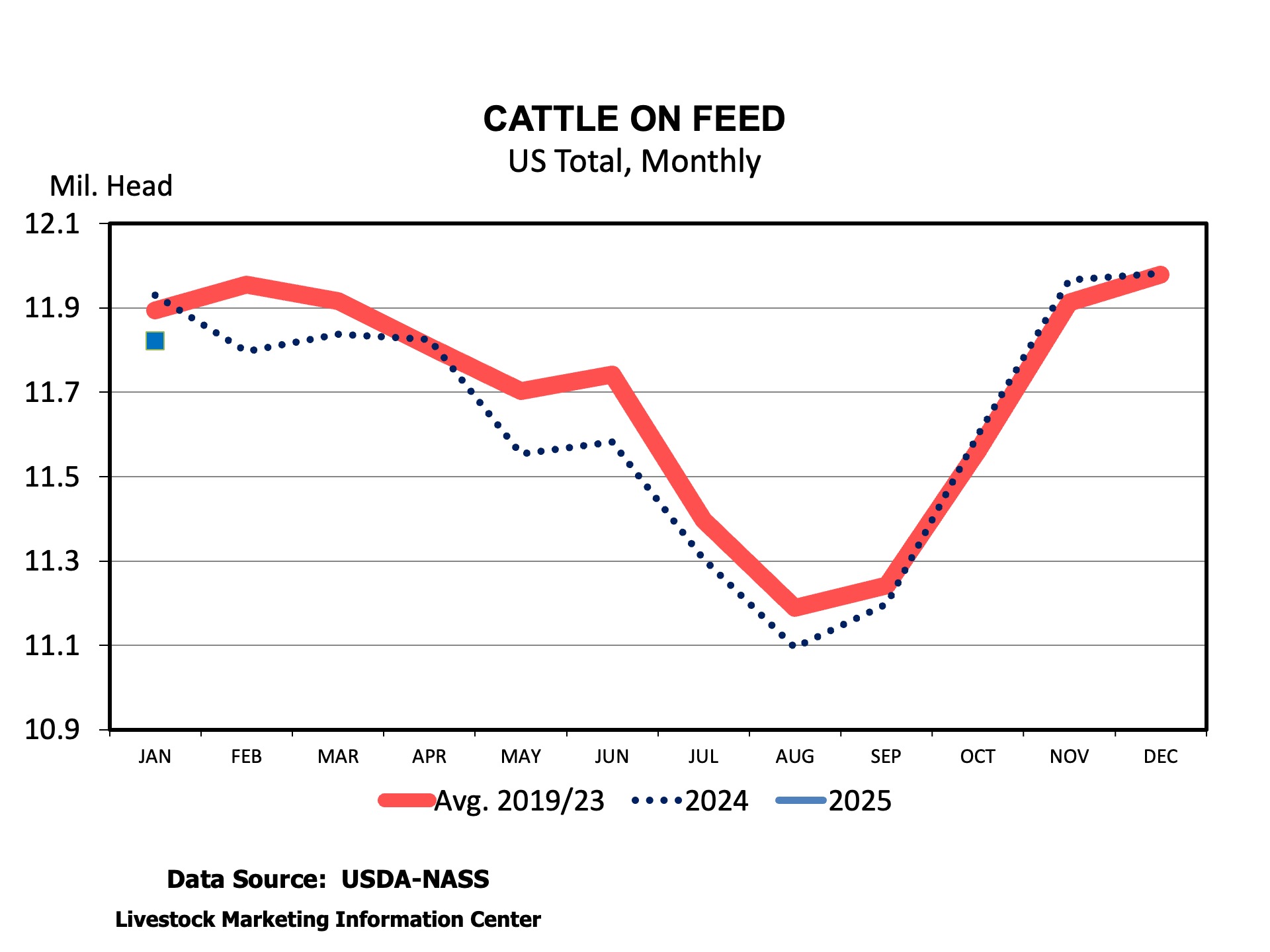The headline numbers of feedlot marketings, placements, and total cattle on feed were not a lot different from expectations. Feedlot marketings in March were just over 1 percent larger than the previous March. With the same number of working days in the month as last year, daily average marketings slightly outpaced a year ago. Placements were 5.1 percent larger than last year. Larger placements were not a surprise due to an expectation that placements were delayed a bit from February and, normal, seasonally larger March placements from wheat and other small grain pastures. Larger placements and marketings left the total number of cattle on feed 1.6 percent fewer than last year.
Placements for the year are worth another look. For the first 3 months of the year, placements are 4 percent, or 216,000 head, fewer than last year. But, feeder cattle imports from Mexico through March are down 227,000 head compared to a year ago. Remember that there were no imports through January and much slower imports in February due to screwworm regulations. Taken together, the decline in imports from Mexico is larger than the total decline in placements so far this year. The impact of fewer feeders from Mexico likely shows up in Texas’ placements, which are down 13.1 percent for the year.
To save the best for last, the most interesting part of this report was the quarterly estimate of the number of heifers in feedlots on April 1. Heifers on feed were down 4 percent, or 180,000 head, compared to April 2024. The 4.38 million heifers on feed were the fewest since April 2020 and before that, April 2018. Since the first of the year, 77,000 fewer spayed heifers were imported from Mexico, so they make up a portion of that decline. While the headline of fewer heifers on feed may raise eyebrows, the number remains large. There have been more than 4 million heifers on feed for 30 consecutive quarters, and they make up 37.6 percent of the cattle on feed. We’ll have to wait for larger and consecutive declines in heifers on feed as evidence of any heifer retention for herd rebuilding.

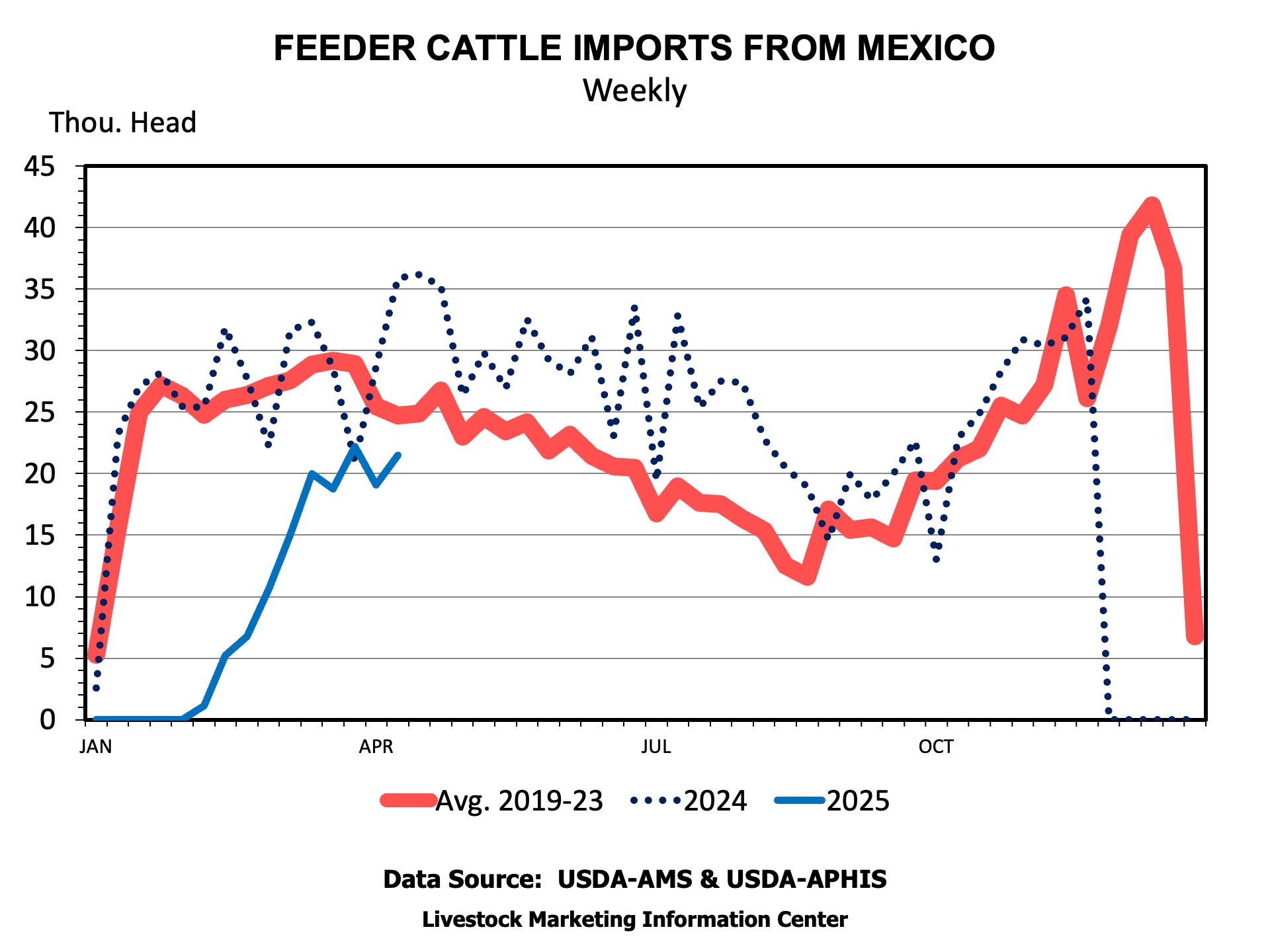
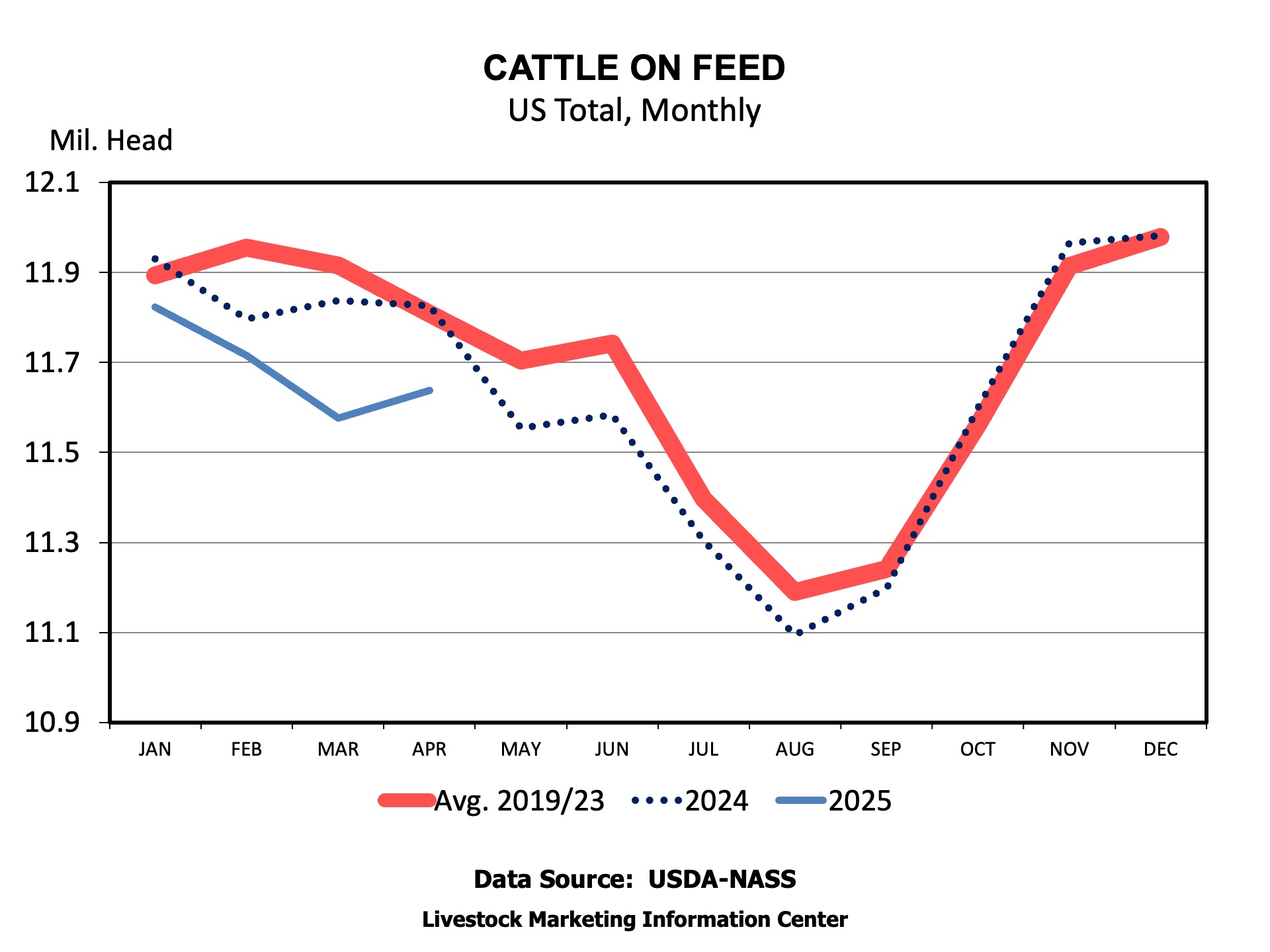
Anderson, David, and Josh Maples. “Fewer Heifers in Feedlots.” Southern Ag Today 5(17.2). April 22, 2025. Permalink

